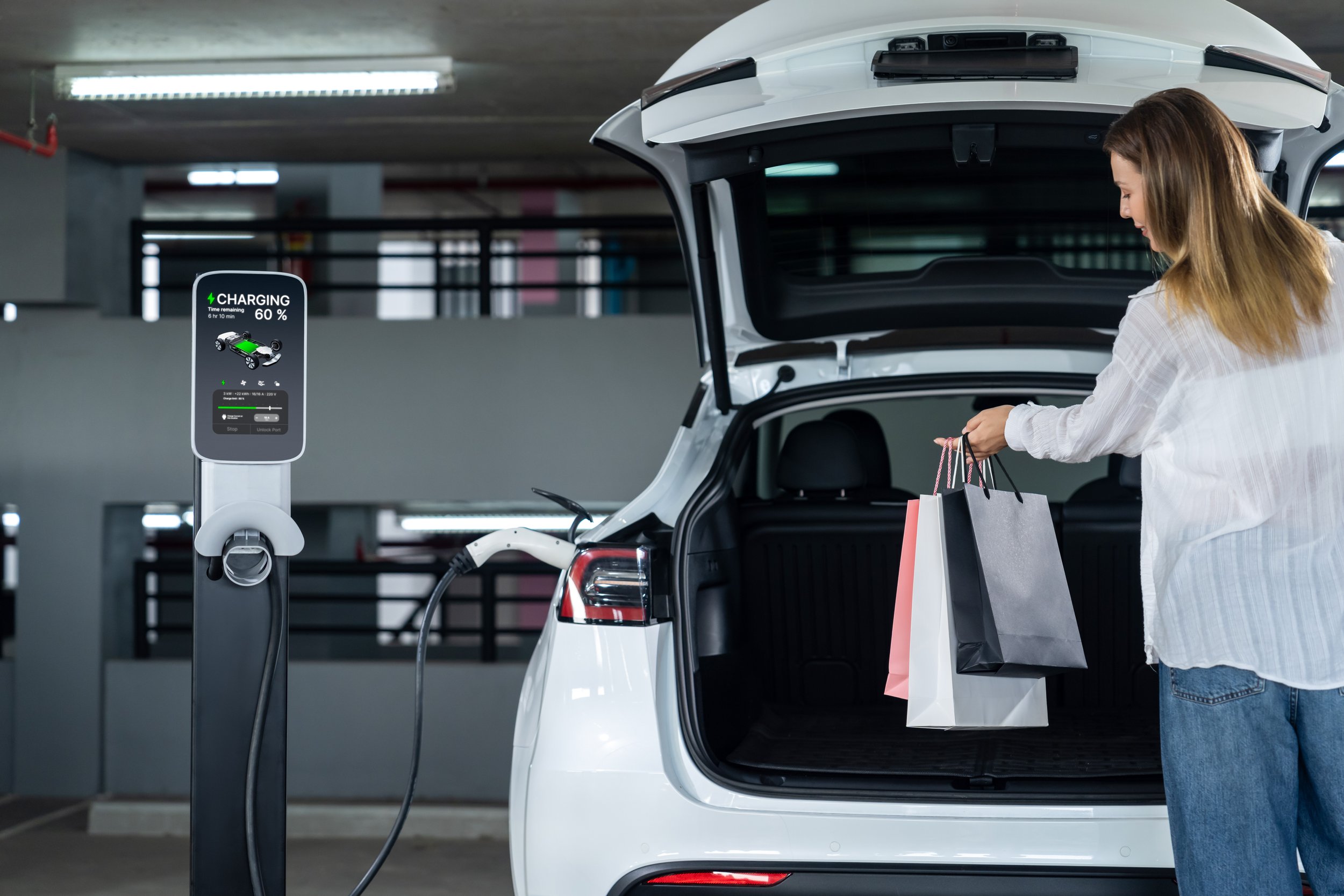
EV Charging For Shopping Centres & Retails
Drive More Foot Traffic with Tailored EV Charging Solutions
At Future Charging Solutions, we deliver comprehensive and tailored EV charging infrastructure designed specifically for shopping centres and retail precincts. We understand the unique demands of these environments—from ensuring convenient access for customers to managing energy usage and maximising foot traffic.
Our solutions enhance your centre’s appeal, support sustainability goals, and give you a competitive edge through reliable, user-friendly charging options. By offering EV charging, your centre attracts more visitors, encourages longer stays, and stays ahead in a rapidly evolving market.
Why EV Charging Matters for Shopping Centres
Shoppers today expect more than just retail options—they want convenience and services that cater to their lifestyle. Providing EV charging:
Attracts eco-conscious customers who prioritize sustainability
Encourages longer dwell times, boosting food court and retail sales
Differentiates your centre in a competitive market
Supports compliance with local regulations and sustainability initiatives
Our End-to-End Approach
At Future Charging Solutions, we manage every aspect of the EV charging journey—from consultation and planning to installation, software, and ongoing support. Our process ensures your site is future-ready, scalable, and aligned with customer and business needs.
Partnering with Shopping Centres to Deliver Future-Ready EV Charging - Step by Step:
Electrical Capacity & Infrastructure
We begin by thoroughly assessing your existing electrical infrastructure—checking the main switchboard capacity, distribution boards, and cabling condition. We determine if your current setup supports the number and type of chargers you need or if upgrades and load management systems are necessary. Planning for future expansion is always part of our process.Site Layout & Parking Design
We conduct a detailed review of your site layout to identify the optimal locations for chargers. We prioritise bays near power sources that are visible and easy to access, while ensuring compliance with parking regulations and safety. We also reserve space for future charging expansions.Customer Behaviour & Dwell Time
Understanding shopper habits is crucial. We analyse average dwell times to recommend the appropriate charger types—Level 2 chargers for longer visits and DC fast or ultra-fast chargers for quick top-ups—ensuring the charging experience matches user needs and visit durations.Charger Type Requirements
Based on your infrastructure and customer profiles, we help you select the right mix of chargers. We balance cost-effectiveness with demand by recommending Level 2 AC chargers for most retail areas, and DC fast or ultra-fast chargers for high-traffic or highway-adjacent locations.Connectivity & Communications
We verify the availability of reliable network connections—mobile, Wi-Fi, or Ethernet—to ensure chargers are fully connected for remote monitoring, payments, software updates, and user app integration, guaranteeing smooth operation.Safety, Accessibility & Compliance
We ensure all installations comply with Australian standards (AS/NZS 3000), placing chargers in well-lit, secure, and accessible locations. Accessibility for people with disabilities is prioritised, and protective measures are installed to guard against damage or vandalism.Branding, Signage & Wayfinding
We design clear, branded signage and wayfinding solutions that make chargers easy to find and use. This not only enhances user experience but also reinforces your shopping centre’s sustainability credentials and marketing appeal.Budget & Funding Opportunities
We provide a comprehensive cost analysis covering hardware, installation, maintenance, and management. Our team also identifies government grants, rebates, and incentives that reduce upfront costs, and we advise on commercial models—ownership, leasing, or partnerships—that align with your financial goals.Ongoing Management & Support
We help establish a reliable support plan, whether managed internally or through a network provider. We assist with performance monitoring, fault response, and customer support to maintain high service reliability and user satisfaction.Sustainability Goals & Future Integration
Our solutions align with your broader sustainability objectives. We provide energy use reporting, carbon savings metrics, and facilitate future integration with solar panels or battery storage to reduce costs and enhance environmental benefits.

At Future Charging, we're dedicated to powering the future with innovative EV charging solutions. Whether you're looking for residential, commercial, or public charging infrastructure, our expert team is here to help. For any enquiries, please feel free to reach out to us.
What You Need to Know Before You Start
Like any of the other changes to common areas, as per strata legislation, installation of EV charger or making changes to electrical services in your building, you need to get approval from the strata committee or the owners' corporation.
Before deciding what is the best EV charger for your building, you also need to familiarise yourself with the costs and benefits of different types and brands of EV chargers.
Lastly, it would be best if you talked with those who specialise in the design, supply, and installation of EV chargers to assist you in identifying the best plan and solution you can have for your building with the current infrastructure.
Request your free EV Charger Guide for Buildings and discuss this with your committee.
Once the committee decides to proceed with EV charger installations, we advise conducting a feasibility assessment to evaluate the practicality and potential success of installing EV charging infrastructure at a specific location or within a particular area

At Future Charging, we're dedicated to powering the future with innovative EV charging solutions. Whether you're looking for residential, commercial, or public charging infrastructure, our expert team is here to help. For any enquiries, please feel free to reach out to us.


